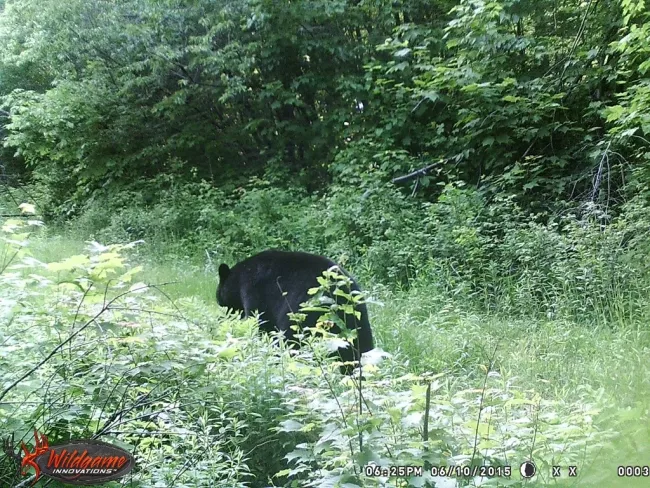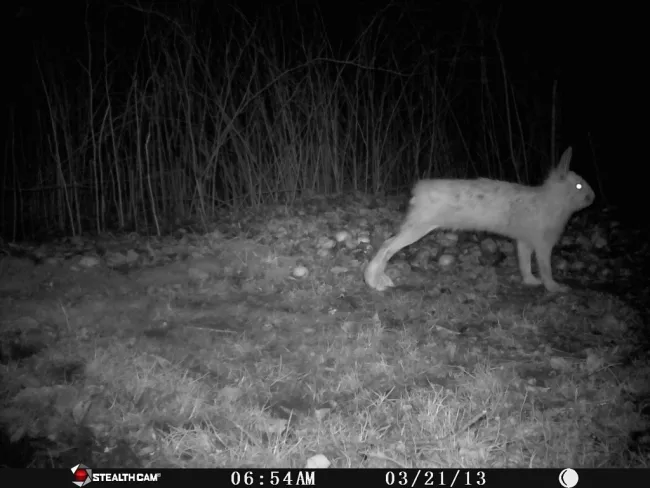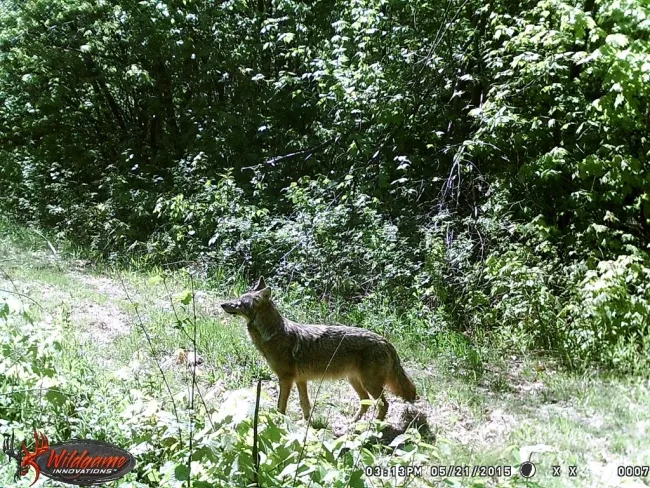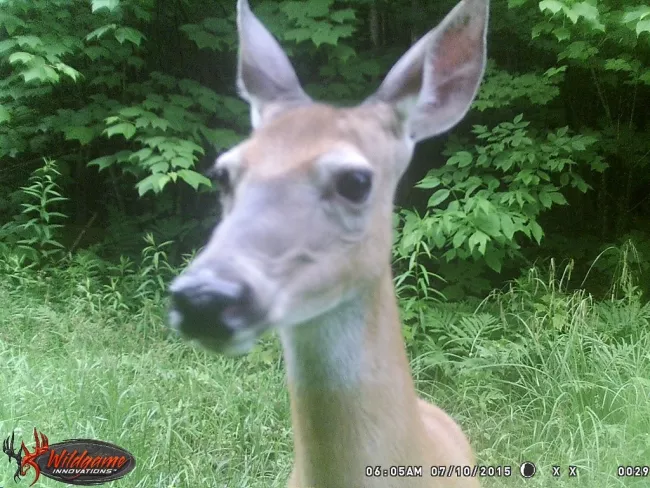My husband, Chris, and I have been the Innkeepers at Seyon Lodge State Park for the past three years. One aspect we love most about working in Vermont State Parks is living in a 27,000 acre state forest and observing the animals that also call this forest home. This year that effort was aided further when Chris' parents gifted us a wildlife camera (we think they really wanted to see more animals of the forest!) So throughout this past season we have been placing it in different areas around the park.
Here is a look at some of the animals we saw:
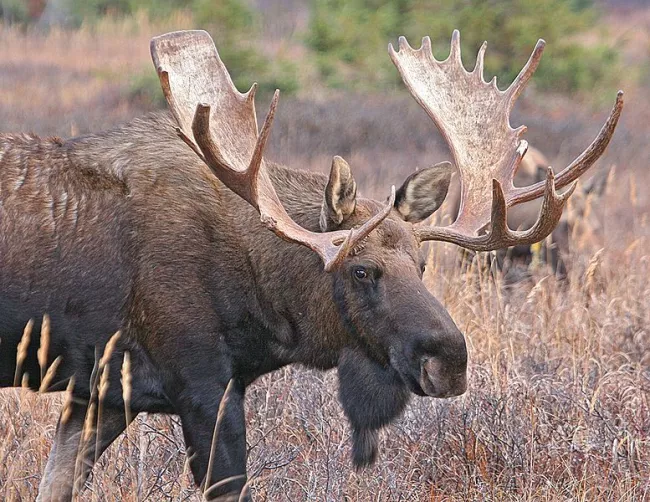
One of the first animals we got photos of was a moose. We see so many signs of moose activity every day. Hoof prints and droppings are everywhere, but to actually see a moose, that is a different story. Moose (alces alces) are the largest of the deer family and are surprisingly nimble for their size. Of the few times over the past couple years I have been lucky enough to see one in person, I am always amazed at how quietly they can move through the forest.
One of our favorite animals we got to observe this year was the beaver (castor canadensis). Known for almost always being busy, they are natures engineers. In the fall if you are staying at the lodge, that is a great time to try and catch a glimpse of them for yourself. Most of the year here at Noyes Pond, the beavers stay on the west end of the pond. In the fall if you go down quietly at dusk, a lot of times you can find them out of the water chomping on apples near the boat shed on the east end of the pond. They also eat leaves, bark, roots, aquatic plants and have transparent eyelids that function much like goggles.
Strolling through the woods the American Black Bear (ursus americanus) seemed to traverse this path although I have never seen a bear in real time around the lodge. Mostly solitary animals, bears are excellent tree climbers and can roam large territories from 15-80 square miles. They eat mostly grasses, roots, berries and insects although they are opportunistic eaters. They will eat fish, mammals, carrion and garbage. With increased human activity it is always very important to follow bear protocol and be responsible with your trash whether you are in a state park or at home in a suburban community.
Because they are so elusive and rarely seen, one of the most exciting animals to catch on the cam was a bobcat! Bobcats (felis rufus) roam throughout North America and can adapt well to various areas. They are about twice as big as the average house cat and are mostly nocturnal. They are named after their tail which appears to be cut or "bobbed."
Any guests that have stayed at the lodge knows one of our most iconic animals is snowshoe hare (lepus americanus). In the spring once the young ones are old enough to venture out of their brushy den area, guests can routinely see them racing around the yard usually just before 7:00 am. This past summer we watched some little ones play hide and seek around the fire pit and one kept poking his head up from the hollowed out ground from behind big stones. The snowshoe hares will change color throughout the year as a defense against predators.
A very clever animal, the coyote, (canis latrans) quietly makes it way through the woods. Coyotes are known for being adaptable and will eat just about anything from rodents, rabbits, carrion, snakes, insects and can run up to 40 mph.
Getting up close and personal, this white tailed deer, (odocoileus virginianus) seemed quite intrigued by the wildlife cam. People ask us all the time if the deer cause us any trouble with our organic garden, and thankfully so far, no.
As animal enthusiasts this wildlife camera has been an awesome and unobtrusive way to get a better idea of what animals we are sharing the trails with. Between the both of us, on average we probably walk the trails five times a week and often separately (because one of us will be back at the lodge cooking for guests) and with all that time spent on the trails, we have hardly seen these animals in person. To me it is a reminder just how important these lands are for the conservation of wildlife, even if we don't routinely see them ourselves.
It has been one of my great pleasures to be given the responsibility of overseeing the lodge and the surrounding grounds. Whether you come to this park walking on two legs or four, hopefully this park is a place of food and refuge. Seyon Lodge State Park is indeed a place where many come together to share in its beauty and for whatever amount of time, call this place home.
Tiffany Soukup is an Innkeeper, world traveler, writer and photographer. She has very much enjoyed calling Seyon Lodge State Park her home for the past few years. You can keep up with her adventures and wildlife findings at www.vagabondway.net.



